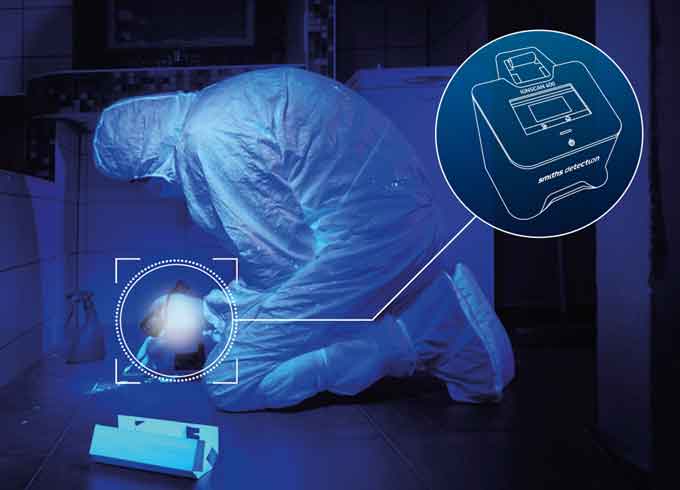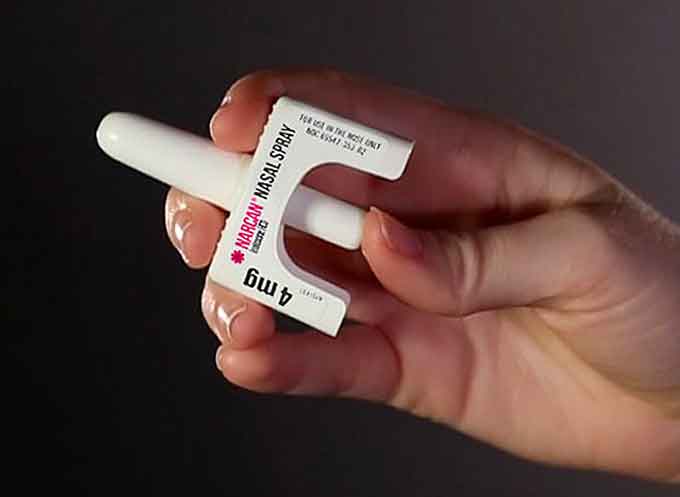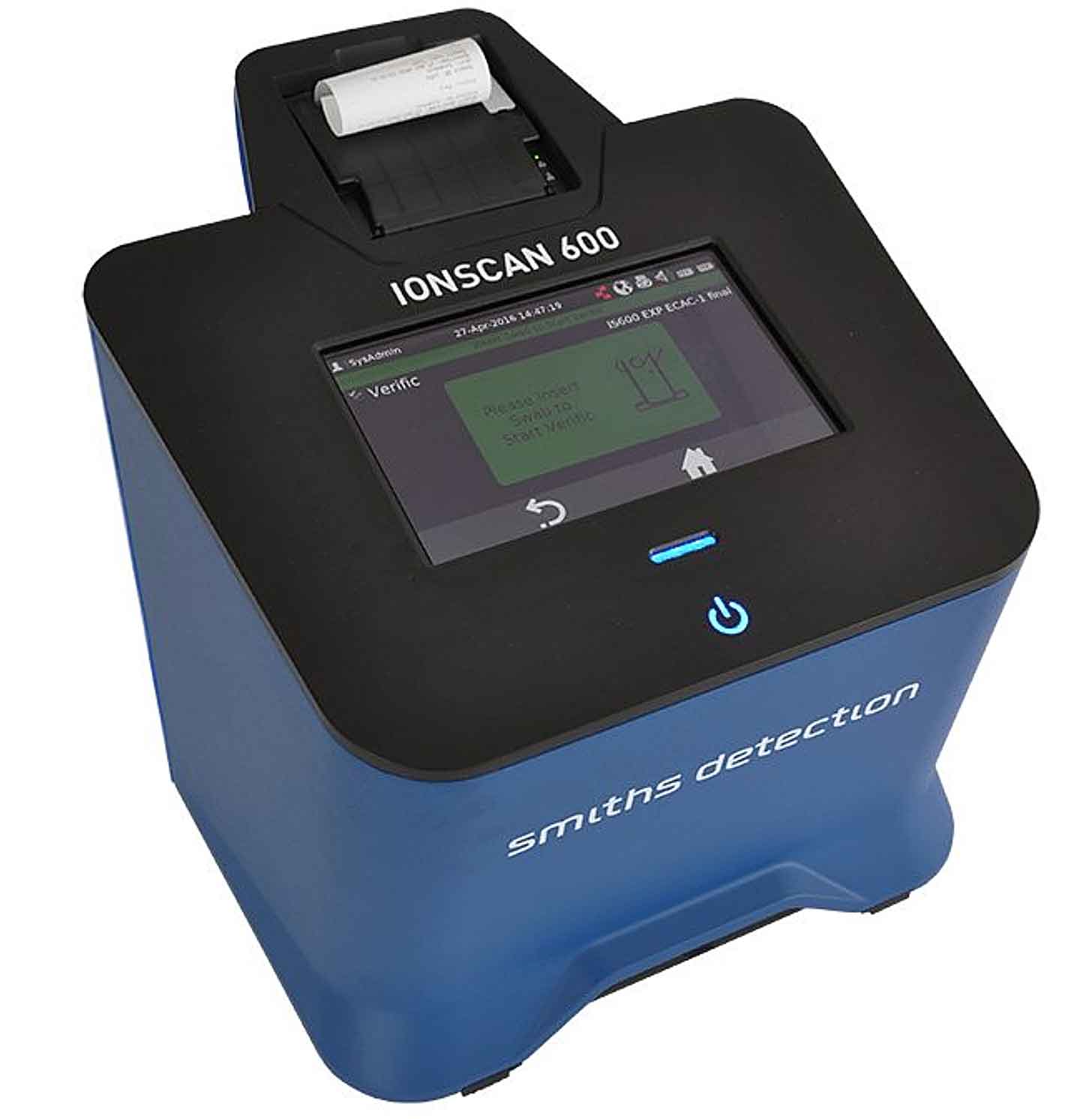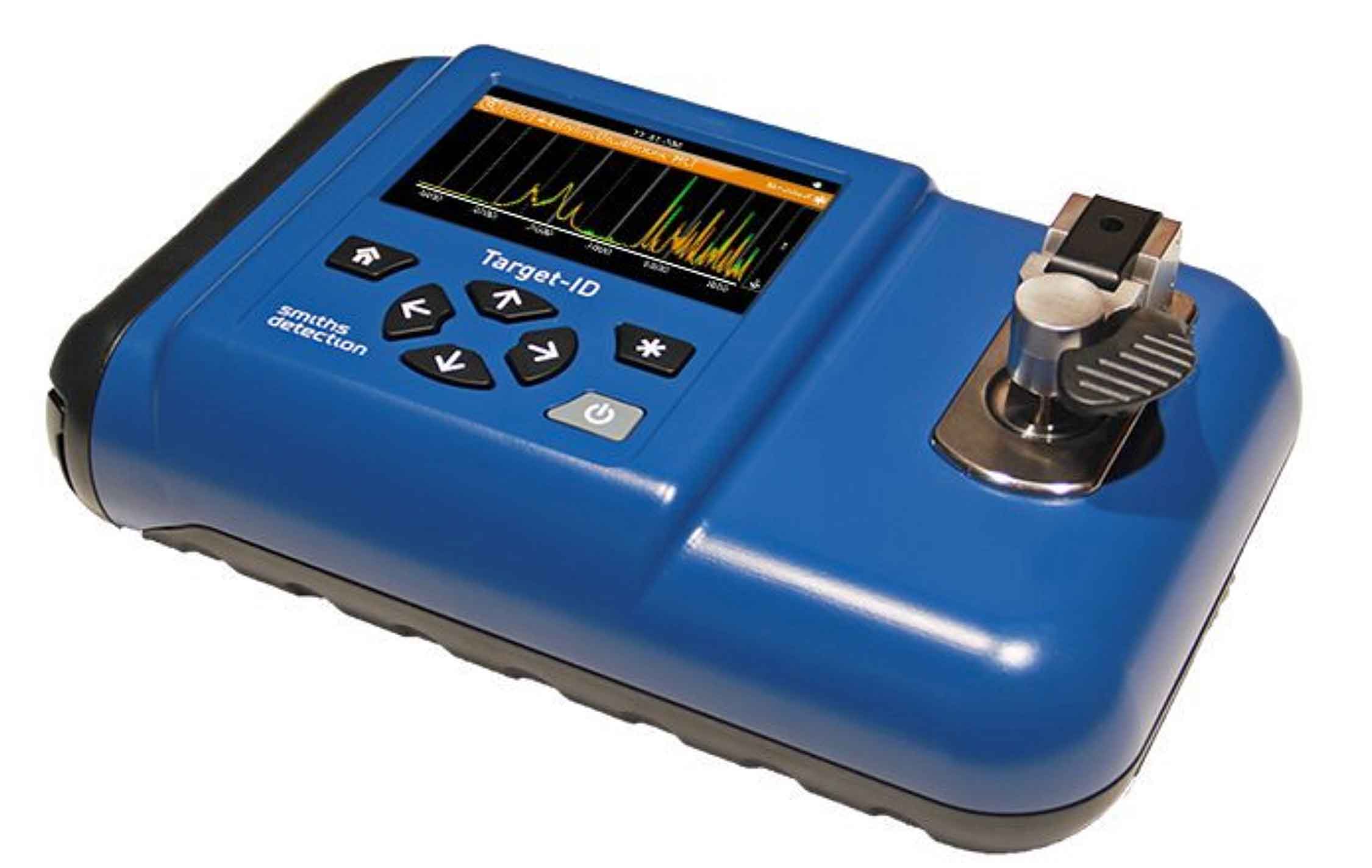
By Dr. Michael Frunzi and Pauline Leary, Ph.D.
The opioid epidemic has rapidly emerged not only as a massive public health emergency but also as a significant national security threat.
Foreign manufacture and cross-border smuggling of lethal drugs like fentanyl and carfentanil is leading to domestic distribution and use that exposes first responders to potentially life-threatening contact with substances often invisible to the naked eye.

Federal, state and local authorities have taken significant action to address the threat posed by opioids, but more must be done to expand the use of existing technologies and the deployment of new tactics to disrupt the threat.
The opioid epidemic is a transnational threat to the United States.
A wide array of opioid analogues are produced in places like China and Mexico and then illegally smuggled into the United States.
A bipartisan report issued at the beginning of 2018 by the United States Senate Homeland Security & Governmental Affairs Committee’s Permanent Subcommittee on Investigations found that in just two years, nearly $800 million worth of pill forms of the opioid fentanyl were purchased online and illegally shipped by Chinese distributors to customers in the United States.
When powdered forms of fentanyl are accounted, the figure is much higher.
(Fentanyl has become a true health threat to law enforcement and first responders protecting the communities we live and work in. Produced in collaboration with the Alliance to Combat Transnational Threats, this brief presentation shows a unique insight into the history, legitimate, and illicit uses of fentanyl, as well as giving practical precautions involving potential exposure risks. Courtesy of U.S. Customs and Border Protection and YouTube. Posted on Feb 4, 2018)
In 2017, a State Department official testified before Congress that between 170,000 and 400,000 companies in China manufacture synthetic drugs like fentanyl.
That massive scale is only one component of the true depth of the problem. In addition, Mexican drug cartels are also smuggling opioids into the United States.
The massive illicit flow and use of these highly powerful drugs is killing Americans at an unprecedented rate.
According to the Centers for Disease Control and Prevention (CDC), drug overdoses killed 63,632 in 2016 and nearly two-thirds of those deaths (66%) involved a prescription or illicit opioid.
(Opioid overdose emergency department visits rose 30% in all parts of the U.S. from July 2016 through September 2017. Courtesy of the Centers for Disease Control and Prevention (CDC) and YouTube. Posted on Mar 6, 2018)
From 2015-2016, the overdose death rate from synthetic opioids (like fentanyl) more than doubled.
While those figures are tragic in the extreme, the impact on the first responders who face this problem on American streets is growing more dangerous all the time.
The Drug Enforcement Administration (DEA) issued a report in 2017 that called accidental exposure to fentanyl-related substances by first responders a “real danger.”
The report described how officers, who are exposed to even tiny specs of fentanyl while executing searches or arrest warrants, conducting undercover investigations, or processing evidence are potentially at-risk.
(FENTANYL: A Real Threat to Law Enforcement courtesy of DEA, The Department of Justice and YouTube. Posted on Sep 19, 2016)
These drugs are so potent that contact with very small quantities can cause first responders to experience medical trauma, overdose symptoms or even death.
Federal, state and local authorities have been using a range of tools and technologies to help better protect themselves from the risks of exposure to these opioids.

These options include basic protections such as gloves and masks, as well as medicines like Narcan.
Narcan works to reverse the effects of opioids after exposure.
They also include detection capabilities.
Several narcotics detection technologies are increasingly being used by authorities to detect and identify fentanyl and its many analogues, even when the amounts present are microscopic.
Smiths Detection has been a leader in narcotics detection and identification technology for decades.

Smiths Detection has adapted several of its leading portable and handheld field technologies specifically to detect and identify fentanyl and its analogues.
Such systems include IONSCAN 600, which can also be found in airports, corrections facilities and security checkpoints around the world.
This portable analyzer detects and identifies invisible amounts of narcotics like fentanyl (as well as explosives), in seconds.
It can be used to accurately detect and identify a wide range of military, commercial and homemade explosives threats and common illegal/controlled narcotics, including the highly potent synthetic fentanyl opioids that are rapidly spreading across the world.
It can also be used covertly to screen doorknobs, steering wheels, or other objects which may have been in contact with fentanyl.
(Portable desktop system used to detect and identify trace amounts of explosives. Non-radioactive IMS source – Easy to use interface requires minimal training – Small, lightweight and portable – Fully operational, hot-swappable battery – Cost effective swabs. Courtesy of Courtesy of Smiths Detection and YouTube)

To support even greater portability and to help identify specific substances, Smiths Detection supplies first responders with Target-ID.
This infrared handheld chemical identifier performs chemical analysis on bulk amounts of unknown solids, liquids, and gels providing results in approximately one minute.
Combining the power, speed, and accuracy of Fourier Transform Infrared (FTIR) with a library of up to 2,500 narcotics, precursors, cutting agents and common chemicals, Target-ID returns identification results in a matter of seconds without damaging or degrading the sample.
The results are so accurate and reliable that they may be used as court-admissible evidence.
(The Smiths Detection Target-ID is a fast, extremely effective handheld illegal drug identifier and the first Fourier Transform Infrared (FTIR) spectroscopy identification system developed specifically to support narcotics interdiction efforts. It combines the power, speed, and accuracy of FTIR with a library of over 2,500 narcotics, precursors, cutting agents and common chemicals. Target-ID returns identification results in a matter of seconds without damaging or degrading the sample. Courtesy of Smiths Detection and YouTube)

For other situations in which first responders need to identify unknown substances in bags or bottles, Smiths Detection has adapted its ACE-ID, which utilizes laser Raman technology, to allow users to perform analysis of unknown substances without having to handle them directly.
ACE-ID quickly screens potentially dangerous unidentified substances such as explosives, narcotics and toxic chemicals.
Orbital Raster Scan (ORS) technology diffuses Raman laser energy to reduce the risk of heating/igniting explosives, burning samples or detonating energetic materials.
ACE-ID can identify materials in seconds through translucent or semi-translucent containers such as plastic or glass; it’s smaller than a paperback book and can be operated with just one hand.
Like the Target-ID, it can also be used outdoors or in high temperatures.
(The Smiths Detection ACE-ID quickly identifies suspect solids, liquids, gels and powders. Using Raman spectroscopy, the ruggedized ACE-ID enables non-contact analysis, yielding rapid results in seconds. Materials can be identified through translucent and semi-translucent containers such as plastic and glass. In addition, non-contact analysis is also supported by a software kit for remote operation. Courtesy of Smiths Detection and YouTube)
Smiths Detection does more to support first responders than just provide best-in-class fentanyl detection and identification technologies.

Smiths Detection also makes sure its ReachBackID 24/7 hotline gives first responders using these technologies access to Ph.D. scientists to support their on-scene tests.
This critical support can help first responders in the field accurately, and with the greatest level of confidence, identify the substances encountered so that informed decisions can be made in real time.
Federal authorities have recognized the critical role that narcotics detection technologies play in helping to limit illegal opioid smuggling as well as protect first responders from exposure.
At the end of 2017, Congress passed, and President Trump signed, an appropriation for $30 million for United States Customs and Border Protection (CBP) to buy portable chemical screening devices and new laboratory equipment at land-based ports of entry, airports and international mail facilities.
This was an important step, but only a first step toward making better use of technology to help address the opioid epidemic.
As previously noted, state and local authorities are paying a heavy price for inadvertent exposure to fentanyl and its analogues.
(Ohio police officer Chris Green suffered an accidental overdose after he came in contact with the deadly opioid in powder form during an arrest. Green doesn’t know how some of that powder ended up on his sweatshirt and then on his fingertips, but that’s all it took for an overdose. Courtesy of CBS This Morning of YouTube)
However, those agencies – especially ones based in rural areas — are also least likely to have the resources to purchase the latest detection equipment available to help them better protect themselves.
The federal government already has several grant programs to support state and local law enforcement agencies, but the criteria for those programs was created prior to the emergence of the opioid epidemic.
Congress should act immediately to encourage the Department of Justice to ensure that its existing grant programs for state and local authorities allow for the purchase of fentanyl detection and identification technologies.
As this threat continues to evolve, the technologies used to combat it must also evolve.
U.S. Customs and Border Protection (CBP) has identified international mail screening as a critical space in which to combat the illegal import of foreign-manufactured opioids.
(Learn More. The National Institute of Standards and Technology (NIST) is conducting research on how technology can be used to safeguard emergency responders from the lethal effects of fentanyl exposure. As part of this research, NIST utilized the Smiths Detection IONSCAN 500DT to gauge it’s effectiveness in detecting trace particles of fentanyl. Courtesy of Smiths Detection and YouTube)
The same technologies used to help first responders test an unknown substance won’t necessarily solve this problem alone – but they may be adapted to do so.
With additional investments in research and development, detection technology has the potential to become a critical tool for high-volume mail screening to help CBP and the United States Postal Service better interdict illegal narcotics shipments.
Congress and the Trump Administration need to commit greater research and development resources in collaboration with industry to adapt existing – and develop new – technology to address this threat.
The opioid epidemic is a current and growing national security threat that is killing tens of thousands of Americans each year and exposing first responders to grave risk.
(MSNBC’s Jacob Soboroff examines the cause of the deadliest drug crisis in American history. Courtesy of MSNBC and YouTube. Posted on Nov 9, 2017)
Congress and the Trump Administration have begun to take critical action to address this threat but more needs to be done.
Putting current fentanyl detection and identification technologies in the hands of federal, state and local law enforcement, fire and EMS authorities can significantly improve their ability to better protect themselves and the communities that they serve.
Coupling this with significant new investments in research and development to help interdict the shipments that are flooding the country with these killer drugs would finally begin to roll back this threat.
By Dr. Michael Frunzi and Pauline Leary, Ph.D.

Dr. Michael Frunzi, is the Global Product Manager for Smiths Detection optical product lines including the HazMatID product family as well as subject matter expert for infrared, Raman, hyperspectral and other optical technology.
Smiths Detection, part of Smiths Group, is a global leader in threat detection and screening technologies for aviation, ports and borders, urban security and the military.

















